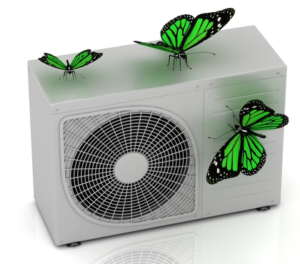What Is A SEER Rating?
 A SEER or Seasonal Energy Efficiency Rating or SEER is a metric for measuring the efficiency of air conditioners seasonally. A good grasp of this metric is important for several reasons. To start with, air conditioners sold in most states must satisfy the federal government’s minimum SEER rating. In addition, installing an efficient air conditioner is an effective way of cutting your energy bills. Here is some more information on this topic:
A SEER or Seasonal Energy Efficiency Rating or SEER is a metric for measuring the efficiency of air conditioners seasonally. A good grasp of this metric is important for several reasons. To start with, air conditioners sold in most states must satisfy the federal government’s minimum SEER rating. In addition, installing an efficient air conditioner is an effective way of cutting your energy bills. Here is some more information on this topic:
How A SEER Rating Works
Contents
In order to understand how this rating works, it is necessary to look at a closely related metric called Energy Efficiency Ratio. SEER is simply the ratio of total seasonal cooling output divided by total seasonal input. Cooling output (energy) is usually given in terms of British-thermal-unit-per-hour while input is given as electrical energy expenditure in Wh. In addition, its calculation is based on a single outdoor temperature reading and a similar indoor reading (in most cases 95 °F and 80 °F at 50% relative humidity). The calculation of a SEER rating is in many ways similar to that of EER although outdoor temperature readings span an entire cooling season. Nevertheless, indoor temperature reading remains the same. The result is expressed as BTU/W.hr.
The Importance Of SEER Rating
Majority of air conditioning units sold in the US come with SEER ratings well above 10. In fact, states like Alabama, Florida, Hawaii, Tennessee, Delaware, and Texas require air conditioners sold to consumers to have minimum SEER of 14. Nevertheless, you may come across cooling units rated nine or even lower. Such units tend to be old and highly inefficient. If you have such a unit at home, it is advisable to replace it with a modern and more energy efficient one.
In general, the main benefit of installing an old air conditioner with an energy efficient one is cutting home cooling energy expenditure. Secondly, it reduces a homeowner’s carbon footprint. For instance, an air conditioner with a SEER of 16 would cut greenhouse gas emission by up to 30,000 pounds over its lifetime.
Heat Pump And Furnace Efficiency
Besides air conditioners, energy efficient heat pumps and furnaces are also important. For heat pumps, efficiency is denoted as Heating and Seasonal Performance Factor (HSPF). On the other hand, furnace efficiency is given as Annual Fuel Utilization Efficiency (AFUE). A higher rating typically denotes higher efficiency in both cases.
Conclusion
If you are planning to buy a new air conditioner, go for one with SEER rating of 14 or higher. It will help you cut home cooling expenses and release of greenhouse gases.
Fortunately, R.F. Ohl specializes in the installation of AC systems and we have the most energy efficient brands available for you at a discount price. We guarantee our work and maintain Keep cool this summer by calling us and speaking with a live representative 24/7.
Click here for more information.
Contact us today or give us a call at (610) 377-1098 if you have any questions.
